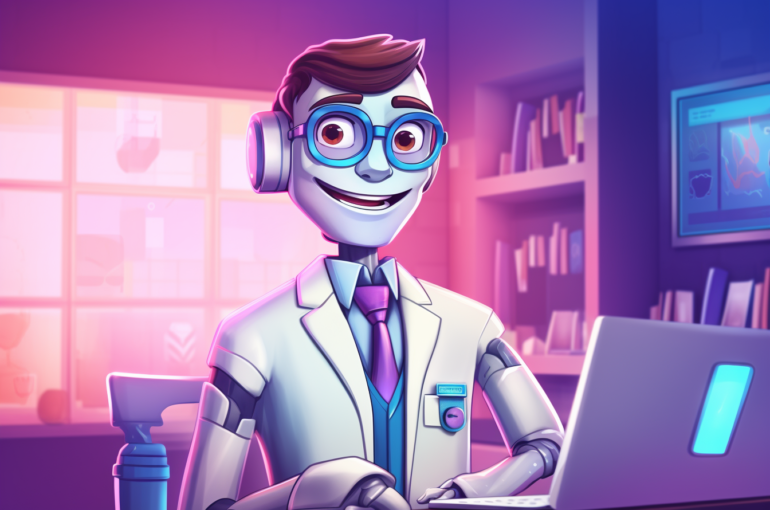How AI and Chatbots Revolutionize Healthcare by Reducing No-Shows
How AI and Chatbots Revolutionize Healthcare by Reducing No-Shows

One of the most persistent challenges in healthcare is the issue of no-shows. When patients fail to attend their scheduled appointments, it can disrupt the clinic’s operations and lead to decreased patient satisfaction. However, with the advent of artificial intelligence (AI) and chatbots, healthcare providers now have powerful tools at their disposal to tackle this problem.
The Problem of No-Shows in Healthcare Appointments
No-shows are a common occurrence in the healthcare industry, with studies showing that they can account for up to 30% of all appointments. This not only wastes valuable time and resources, but it can also have significant financial implications for clinics and hospitals.
How AI and Chatbots Can Help Reduce No-Shows
AI-powered chatbots have emerged as an effective solution to combat no-shows. These intelligent virtual assistants can engage with patients through various channels, such as websites and mobile apps, providing timely reminders about their upcoming appointments. By leveraging AI algorithms, chatbots can personalize these reminders based on individual preferences, ensuring that patients receive the information in a way that is most convenient for them.
Benefits of Using Chatbots in Healthcare
Implementing chatbots in healthcare settings offers numerous benefits, including:
- Improved Patient Engagement: Chatbots enable clinics to stay in constant communication with their patients, fostering stronger relationships and enhancing engagement. By sending personalized messages, chatbots can provide patients with relevant healthcare information, tips, and reminders, empowering them to take better care of their health.
- Reduced Administrative Burden: Chatbots can automate various administrative tasks, such as scheduling appointments and filling out forms. This not only saves time for healthcare professionals but also streamlines the entire appointment process, ensuring that patients have a seamless experience.
- Enhanced Access to Healthcare: Chatbots can extend healthcare access to underserved populations by providing a convenient and cost-effective way to seek medical advice. Patients can interact with chatbots to receive basic healthcare guidance and information, reducing the need for in-person visits.
- Increased Efficiency: By automating routine tasks, chatbots free up healthcare professionals’ time, allowing them to focus on more complex and critical aspects of patient care. This leads to improved efficiency in healthcare delivery and shorter wait times for patients.
- 24/7 Availability: Unlike human staff, chatbots are available round the clock to assist patients. This constant availability ensures that patients can access support and information whenever they need it, reducing anxiety and enhancing their overall experience.
Implementing Chatbots in Healthcare Settings
Integrating chatbots into healthcare settings requires careful planning and consideration. Here are some key steps to successfully implement chatbots:
- Identify Target Use Cases: Determine the specific areas where chatbots can add value, such as appointment reminders, patient education, or triage support. Focus on use cases that align with your clinic’s goals and priorities.
- Select the Right Chatbot Platform: Choose a chatbot platform that meets your clinic’s requirements and integrates seamlessly with your existing technology infrastructure. Consider factors such as ease of use, scalability, and customization options.
- Develop Conversational Flows: Design conversational flows that align with your clinic’s brand and tone of voice. Ensure that the chatbot can understand and respond to a wide range of patient queries and provide accurate and reliable information.
- Train the Chatbot: Train the chatbot using real patient data to improve its natural language processing capabilities. Regularly review and update the chatbot’s training data to ensure accuracy and relevance.
- Promote and Educate: Educate your patients about the chatbot’s capabilities and how it can benefit them. Use various channels, such as social media, email newsletters, and waiting room displays, to raise awareness and encourage patient interaction.
- Monitor and Optimize: Continuously monitor the chatbot’s performance and gather feedback from patients to identify areas for improvement. Use analytics tools to analyze usage patterns and optimize the chatbot’s conversational abilities over time.
Success Stories of Chatbot Implementation in Healthcare
Numerous healthcare providers have already reaped the benefits of chatbot implementation. For example:
Mayo Clinic: The Mayo Clinic implemented a chatbot that provides users with self-help guidance for various medical emergencies. The chatbot uses an AI-powered algorithm to ask users about their symptoms and provide appropriate first-aid advice until professional medical help arrives. The AI chatbot will soon assist clinicians and their administrative staff with time-consuming, hands-off tasks like health record retrieval and routine medical questions.
Babylon Health: Babylon Health’s chatbot, known as ‘GP at Hand,’ allows users to schedule video consultations with doctors, access healthcare information, and receive personalized health plans. This chatbot has helped improve access to healthcare for millions of people, especially those in remote or underserved areas.
Final Thoughts
The implementation of AI and chatbots in healthcare settings has the potential to revolutionize patient engagement and reduce the problem of no-shows. By leveraging the power of AI algorithms, chatbots can provide personalized reminders, streamline administrative tasks, and enhance access to healthcare. As more healthcare providers embrace this technology, patients can expect improved communication, increased efficiency, and ultimately better overall healthcare experiences.










